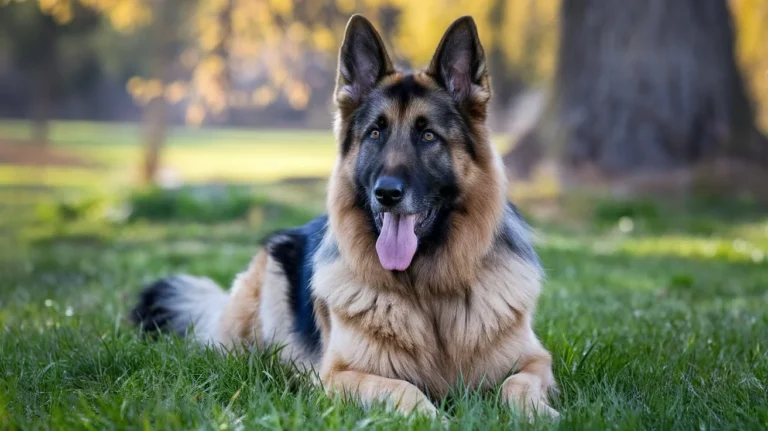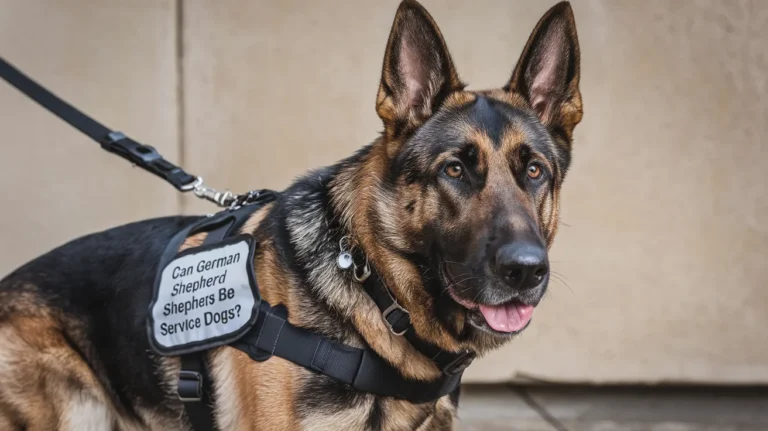What Are the Different German Shepherd Breeds?
The German Shepherd is one of the most recognizable and beloved dog breeds in the world. Known for its intelligence, loyalty, and versatility, the German Shepherd has become a popular choice for families, service roles, and working environments like police work, search-and-rescue, and military service. However, many people are unaware that there are actually different variations or types within the German Shepherd breed.
When we talk about the different German Shepherd breeds, we’re referring to variations in bloodlines, physical appearance, and sometimes even the purpose for which the dog is bred. In this article, we’ll explore the various types of German Shepherds, their traits, characteristics, and how to choose the right one for your lifestyle.
Understanding the German Shepherd’s Origins and Characteristics
Before diving into the different types, it’s essential to understand where the German Shepherd came from and what makes it so special. The breed was first developed in Germany in the late 19th century by Max von Stephanitz, who aimed to create a dog that was intelligent, strong, and capable of working in various roles, particularly herding. Today, German Shepherds are still widely known for their work ethic and trainability, making them highly sought after for a range of tasks.
General Traits of the German Shepherd
The German Shepherd is typically a medium-to-large-sized dog with a sturdy, muscular build. They have erect ears, a long, bushy tail, and a distinctive double coat that can come in a range of colors, including black, tan, sable, and bi-color.
These dogs are incredibly loyal, protective, and highly intelligent, which makes them excellent companions for families, as well as superb working dogs. German Shepherds are known for their ability to adapt to various situations, which is why they’re used in roles like therapy, guide dogs, and in search-and-rescue operations.
Types of German Shepherds Based on Bloodlines and Purposes
While all German Shepherds share these general traits, the breed has evolved into several different bloodlines over time. These variations exist based on the purpose for which the dogs are bred, such as working dogs, show dogs, and family pets. Below are the major categories of German Shepherd variations:
- Working Line German Shepherds
- Show Line German Shepherds
- American German Shepherds
- European German Shepherds
- West Working Line German Shepherds
- East German Shepherds
- Long-Haired German Shepherds
- Black German Shepherds
Working Line German Shepherds: The Ultimate Working Dog
The Working Line German Shepherds are bred primarily for their working abilities. These dogs are highly energetic, agile, and intelligent. They are often chosen for tasks like police work, military roles, and search-and-rescue operations.
Physical Characteristics
Working Line German Shepherds tend to have a leaner, more athletic build, which is a reflection of their intended purpose. Their body structure is typically more angular and less compact than that of the show line varieties. These dogs are bred to be physically capable, with strong bones and muscles that can handle the demands of their work.
Temperament and Behavior
Working Line German Shepherds are extremely driven and highly obedient, but they require a significant amount of mental and physical stimulation. Because of their high-energy nature, these dogs are often not suitable for families or owners who cannot provide them with enough activity. If you’re looking for a dog to work alongside you in active roles or if you have the time and energy to dedicate to training and exercise, a Working Line German Shepherd is an excellent choice.
Show Line German Shepherds: The Beauty and Elegance of the Breed
On the opposite end of the spectrum are the Show Line German Shepherds, which are bred with an emphasis on their physical appearance and conformation to breed standards. These dogs are most commonly seen in dog shows and competitions, where they are judged based on their looks, posture, and gait.
Physical Characteristics
Show Line German Shepherds tend to have a more relaxed build compared to Working Line dogs. Their sloping back is one of the most distinctive features, which gives them a unique appearance compared to their working counterparts. Their coat is often thicker and fuller, contributing to their elegant appearance.
Temperament and Behavior
While Show Line German Shepherds are still intelligent and loyal, they are generally less driven than Working Line dogs. These dogs are more suited for life as a family pet or companion dog rather than as a working dog. They may still enjoy activities like obedience training or agility, but they typically require less intense physical activity than Working Line German Shepherds.
American vs. European German Shepherds: Key Differences in Type
When it comes to American German Shepherds versus European German Shepherds, there are noticeable differences in both appearance and temperament. These distinctions stem from the different breeding standards in the United States and Europe.
American German Shepherds
American German Shepherds are bred with a focus on companionable traits, such as loyalty and intelligence. While they still possess the characteristics of the breed, they tend to have a less intense working drive compared to their European counterparts.
European German Shepherds
European German Shepherds, particularly those from working lines, are bred to be more intense and focused. These dogs often have a stronger drive to work, making them ideal for professional roles like police, military, and protection work. They also tend to have a more compact build and a more upright posture than American German Shepherds, contributing to their appearance as highly athletic working dogs.
Differences in Temperament
While American German Shepherds are often more laid-back and adaptable as family pets, European German Shepherds are typically more intense and focused. This makes the European variety better suited for people who need a dog with strong working instincts and a high level of drive.
West Working Line vs. East German Shepherds: A Look at Their Unique Qualities
Another distinction within the German Shepherd breed is between West Working Line and East German Shepherds. These dogs hail from different regions in Europe, and their differences can be seen in their behavior, appearance, and overall temperament.
West Working Line German Shepherds
West Working Line German Shepherds are primarily bred for work and sport purposes. These dogs are highly trainable, energetic, and have a strong desire to please. They are well-suited for tasks that require agility and precision, such as in obedience trials or as search-and-rescue dogs.
East German Shepherds
East German Shepherds, often called DDR German Shepherds, were bred during the era of the German Democratic Republic (DDR). These dogs are typically known for their strong protective instincts and tend to have a more robust, often larger build compared to their Western counterparts. They were originally bred for security and protection work, making them a great choice for families or individuals looking for a loyal guard dog.
Long-Haired German Shepherds: The Beautiful Variation with a Unique Coat
While most German Shepherds have a short to medium-length double coat, there are also long-haired German Shepherds. These dogs have a unique coat that requires more maintenance but is incredibly beautiful.
Physical Characteristics
Long-Haired German Shepherds have a fluffy, flowing coat, with longer fur around their body, tail, and neck. This coat makes them stand out visually but also requires more care and grooming. Their long, flowing fur can sometimes give them a more luxurious appearance, but they do tend to shed more than their shorter-coated counterparts.
Temperament and Grooming Needs
Long-Haired German Shepherds have the same general temperament as other German Shepherds, though they may be a bit more laid-back when it comes to activity. Their grooming needs are more intensive, requiring regular brushing to prevent mats and tangles.
Black German Shepherds: A Rare but Stunning Variation of the Breed
Finally, the Black German Shepherd is a strikingly beautiful variation of the breed. These dogs have a solid black coat, which makes them stand out from the typical black-and-tan German Shepherd.
Physical Characteristics
The Black German Shepherd looks almost identical to the typical German Shepherd, with the exception of their solid black coat. Their coat is dense and can be either short or long-haired, depending on the specific line. Their build and size are similar to other German Shepherds, though the black coat often gives them a sleek and imposing look.
Rarity and Price
The Black German Shepherd is considered rarer than the traditional coat variations, making them more expensive. They are prized for their majestic and bold appearance, and while their temperament and behavior are consistent with the standard German Shepherd breed, they often attract attention due to their unique looks.
Conclusion: Choosing the Right Type of German Shepherd for Your Lifestyle
In conclusion, there are several different German Shepherd breeds or lines, each with its own unique characteristics and purposes. Whether you are looking for a highly energetic working dog, a family companion, or a stunning show dog, there is a German Shepherd variation suited to your needs.
When choosing the right type of German Shepherd, it’s important to consider the dog’s temperament, energy levels, and intended purpose. By understanding the differences between the working line, show line, American, European, and other types of German Shepherds, you can find the perfect dog to suit your lifestyle.
No matter which variety you choose, a German Shepherd will undoubtedly make a loyal, intelligent, and loving companion.







